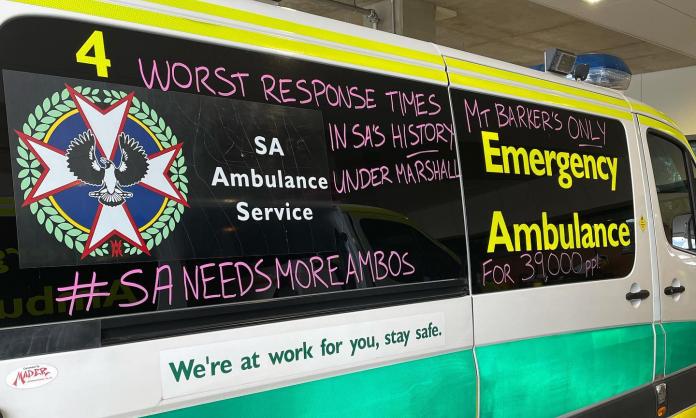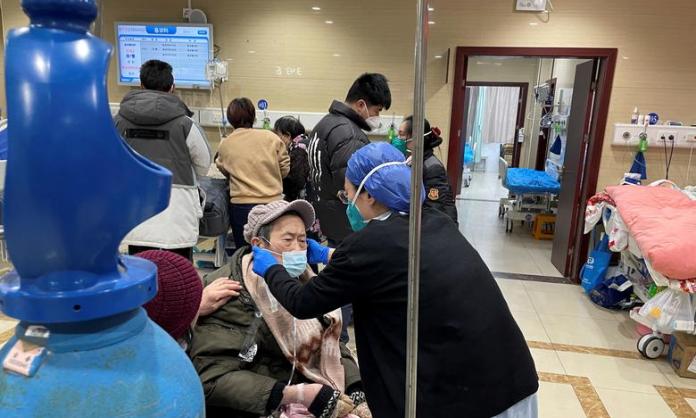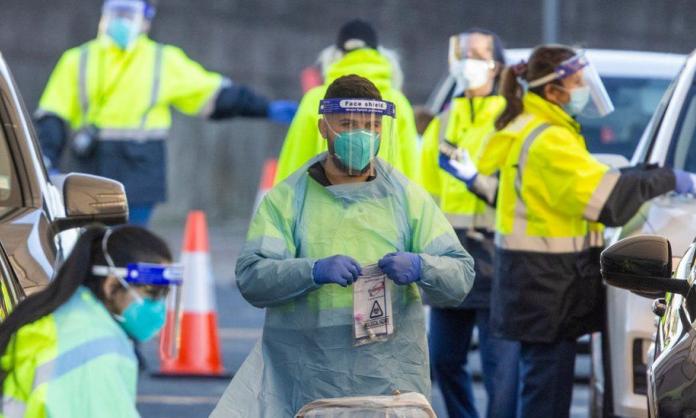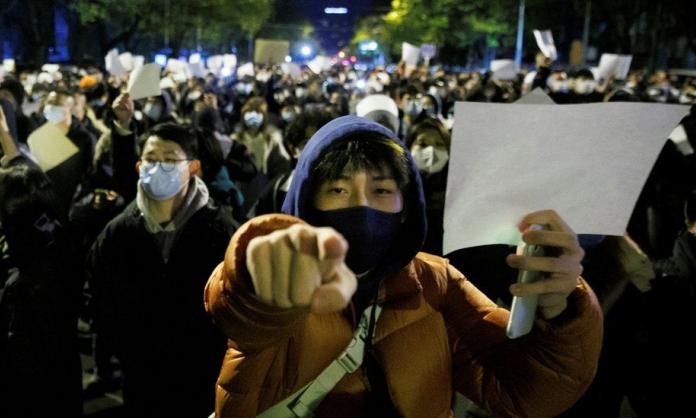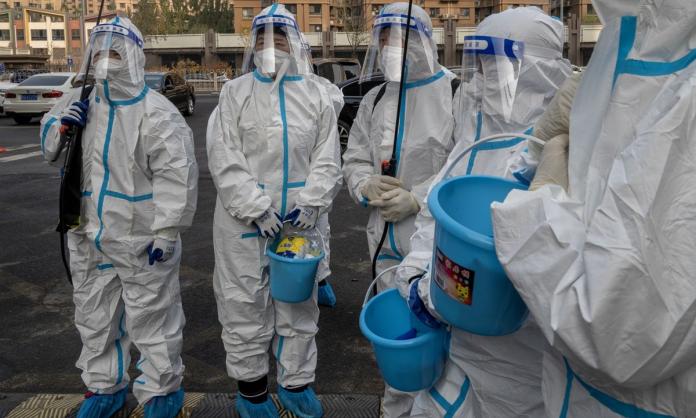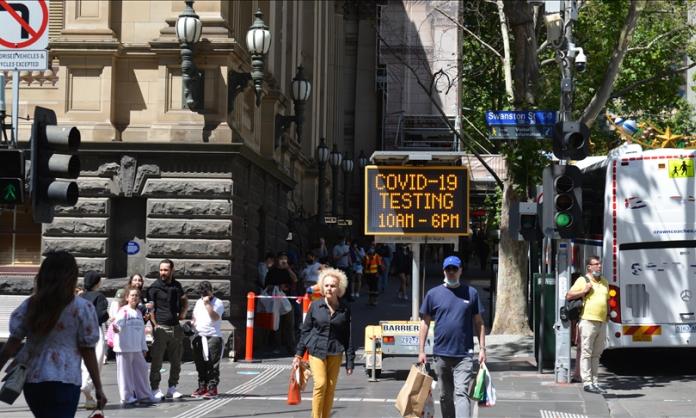There is a crisis for South Australian paramedics, and it’s only going to get worse. Hospital emergency departments increasingly are over capacity, so instead of handing patients over to the doctors and nurses, paramedics are forced to care for them outside on the ramps leading to the hospital entrance. This “ramping” can lead to long lines of ambulances stuck waiting and therefore unable to respond to new emergency calls.
We now have the worst ambulance response times in the history of the state. And ramping is at the highest levels on record: in just one month this year, patients were forced to stay in ambulances outside hospitals for more than 2,800 hours.
The crisis is a direct result of underfunding. Steven Marshall’s Liberal government has cut $11 million from ambulance services since coming into office.
Ambulance workers, healthcare professionals and supporters gathered at Parliament House on 17 November to present a petition with 44,000 signatures demanding an end to ramping and greater funding for ambulance services.
Speakers at the rally described direct experience of ramping, having lost family members to the long wait times. In one instance three months ago, a 60-year-old woman unable to breathe waited 35 minutes for help. The ambulance station was just three minutes from her house, but it had no vehicles available. She died.
“Ramping is worse than ever, our workload continues to rise, and people cannot get the help they need when they need it most”, Lynsey Irwin, president of the ambulance workers’ union, said, addressing the crowd.
As she spoke, ambulances passed and honked their horns. So did fire engines. Firies are another part of the workforce bearing the brunt of this crisis.
“What’s been happening is a larger number of what the fire service calls ‘ambulance assist’”, Max Adlam, secretary of the United Fire Fighters Union, told Red Flag.
“Ambulance assist is generally where the ambos would call the firies to come and help them. But what’s been happening is not only are the numbers of those calls increasing, but now we’re finding incidents where firies are being called to an event where there is no ambulance—where there will be no ambulance for a considerable period. They’re being called to attend incidents where they don’t have the equipment [and] they certainly don’t have the training.”
This situation is set to worsen with the Marshall government’s plan to allow the coronavirus to begin circulating in the state from 26 November.
“The research says that four to six weeks after borders opening is when we start to see peak numbers, so we all know that come January it’s not gonna be a very fun time at work”, Irwin said.
“There’s been no COVID preparation for the South Australian ambulance service, so while other health services like doctors, nurses and hospitals have had a plan for funding and for when COVID comes, we’ve had nothing. Not a single extra resource that has been planned in COVID preparedness.”




